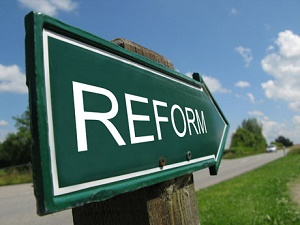ATD Blog
A Path to Performance Management Reform
Tue Jun 09 2015
In the previous blog, “Same Ingredients, Different Recipe: Innovating on Performance Goals, Feedback, and Ratings,” we discussed practical ways to evolve goal setting, feedback, and performance ratings for the new work environment. Now, let’s break down the critical factors needed to drive real and lasting behavior change in the organization.__

Effective performance management provides meaningful, real-time feedback and ensures employees have clear expectations, can solve problems, and are coached to achieve their maximum performance levels. However, the promise of performance management can only be realized through three key types of organizational change and learning.
First, it is ongoing day-to-day behaviors that lead to performance and engagement, not the formal performance management system steps and process.
Second, although managers play a critical role, day-to-day performance involves more than just managers, effective performance management behavior needs to be extended to all colleagues in one’s work network.
And third, four behaviors—Inspire, Adapt, Align, and Grow—are the foundation for high performance.
Inspire involves linking work to the organization’s mission and its success.
Adapt has employees set short-term goals and expectations that flex with changing situations.
Align means employees provide and receive regular, informal feedback that praises and course corrects in real time
Grow involves development as part of daily work, leveraging work experiences and others’ expertise
Experiential Learning Content Model
To embed these types of complex behavior change, organizations find that experiential, on-the-job learning proves far more effective than classroom learning—three times as much, in fact, according to CEB data. What’s more, 70 percent of what employees learn comes from experience, yet 73 percent of the average company’s L&D investment is targeted at formal training.
In defense of current practices, on-the-job learning is hard and few organizations know how to approach learning through experience. At the same time, managers and employees often lack the time and expertise needed to gain value from in-work learning.
The first solution to the challenge is structure: The employee should articulate what she wants to learn, how it will help the business, and how it will help her career.
After laying out the structure, the next step is deliberate, iterative practice. When learners apply new concepts to real work, they discover how they play out across different people and situations, and can adjust their application accordingly. This provides contextualization, personalization, and varied learning experiences essential for deep learning.
Along the way, employees should seek feedback from others (managers, peers, direct reports, and so forth) and practice self-reflection, all in an effort to ensure the learning structure is sound and the practice they’re doing is advancing their performance. Good reflection questions include:
“What did I learn from this experience?”
“How will I apply that to future performance?”
“Am I seeing cues of successful learning?”
This model—Practice, Feedback, Reflect—is practical, scalable, and hard-wires new performance management behaviors in a way that discrete training events can’t.
Bottom line: To succeed in today’s dynamic, complex work environment, it’s critical that companies stop reinventing and overinvesting in formal systems and instead consider how performance management fits into the larger talent management landscape. By treating performance management reform as a change effort, HR teams can best support learning and performance across the organization.
We invite you to learn more about high-performance cultures at cebglobal.com.
You've Reached ATD Member-only Content
Become an ATD member to continue
Already a member?Sign In
